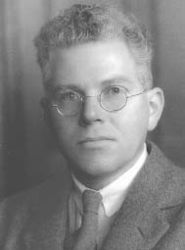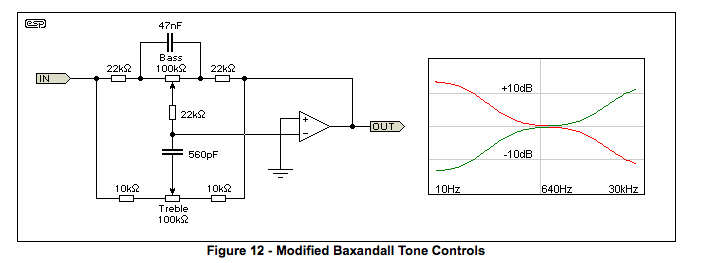|
||
|
Privacy Policy | Editorial Policy | Join the Association | List of Members | Contact us | Index | Print this page |
||
|
Figuratively Speaking.
Frank Alley.
|
||
|
|
||
|
Sidebands.
At Radschool you may well remember lessons concerning non-linear mixing (heterodyning) where additional frequencies are generated, called sidebands. For example, if a 1000 KHz signal undergoes amplitude modulation with an audio signal of 5 KHz, then in the transmitted signal there will be the carrier (1000 KHz) and the upper and lower sidebands (1005 KHz and 995 KHz). We all believe that don’t we? So what is the evidence that the sidebands actually exist? Well, we have all seen them displayed on a spectrum analyser, haven’t we? Something like the picture below:
|
||
|
|
|
|
|
|
||
|
Back at Radschool we had access to a number of electronics magazines, one being Wireless World (now Electronics World). One columnist called himself ‘’Cathode Ray” and he challenged the belief that sidebands were actually transmitted through space. Cathode Ray claimed that the sidebands were generated in the receiver circuits, just as they were in a spectrum analyser, that they did not exist at all. There followed plenty of debate.
So, who was this Cathode Ray?
Marcus Graham Scroggie, B.Sc., F.I.E.E., (1901 - 1989) was a British technical author active in the fields of radio and electronics. He was born in Leytonstone, Essex in 1901, the only son of the Baptist minister, writer and theologian Dr. W. Graham Scroggie. He graduated from Edinburgh University in 1922. He gained practical experience in the still emerging technologies of radio and electronics, at Bruce Peebles Ltd and Creed Telegraph, before moving to Burndept Wireless Co - one of the original constituents of the pre-Reith British Broadcasting Company. He served in World War II in the Royal Air Force (RAF) in command of Pevensey Bay radar station in East Sussex and from there became a lecturer at the RAF Radio School at Yatesbury, Wiltshire, as well as being tasked by the Air Ministry to take charge of all RAF secret radar and radio publications. After the War, he became a technical consultant and is known for more than 800 articles he contributed to 'Wireless World', often under the pseudonym 'Cathode Ray', as well as publishing several books.
|
||
|
On their way to get married, a young couple was killed in a car accident. The couple found themselves sitting outside the pearly gates waiting for St Peter to process them into Heaven. While waiting, they began to wonder, could they possibly get married in Heaven? When St Peter showed up they decided to ask him. St Peter says, "I don't know, this is the first time anyone has asked. Let me go and find out." The couple waited for a couple of months and began to worry. If they could get married, what if things didn't work out. Were they stuck together forever? After yet another month, St Peter finally returns, looking somewhat annoyed. "Yes," he informs them, "you CAN get married in Heaven." "Great!" said the couple, "But we were just wondering, what if things don't work out? Could we also get a divorce in Heaven?" St Peter, red-faced, slams his clipboard to the ground. "What's wrong?" asked the frightened couple. "Oh come on!" St Peter shouts, "It took me three months to find a priest up here! Do you have any idea how long it'll take me to find a lawyer?!" |
||
|
|
||
|
So what of his assertion that sidebands don’t actually exist? It is fascinating that his university education precedes the theories in physics which cast doubt on what reality is. Irwin Schrodinger was an Austrian physicist (later to win the Nobel Prize) who investigated the concept of reality. His ideas are now well understood and accepted. Broadly speaking, reality is what we observe and that for example, the reality of light, or atoms or radio waves can only exist in what we can observe. We know that light can be a wave and can be a particle, but not both at the same time. So what is light? It depends on how you look at it.
Diffraction patterns shown below, can only be explained by the wave model. The photo-electric effect (in photo-multiplier tubes) cannot be explained by the wave model, but can be explained by the particle model. Incidentally, Albert Einstein received the Nobel Prize for his explanation of the photo-electric effect and coined the word ‘photon’. His paper was published in 1905, the year in which he also published a paper on Brownian Motion and Special Relativity. It wasn’t until 1915 that his theory of General Relativity was published.
|
||
|
|
|
|
|
|
||
|
These patterns are produced when a laser beam is shone onto a grating. The following diffraction pattern is produced when electrons are fired at thin graphite crystals:
Whereas Niels Bohr and his
group of physicists explained matter as being made up of particles,
Schrodinger showed that matter was made up of waves constructively
interfering (adding together such as in the bright areas in the patterns
shown above).
In 1935, Schrodinger proposed
a gedanken experiment which is now famously referred to as ‘Schrodinger’s
Cat’. A cat is placed in a box in which there is a glass phial of a deadly
poisonous gas, a radioactive source and a radiation detector connected to
a hammer (for breaking the phial). The radiation source has a long
half-life and a particle is released on average once per half-hour. So,
after half an hour, is the cat alive or dead? Any answer is meaningless
without an observation of the cat. The action of opening the
The Copenhagen Inter-pretation refers to the way that the strange new science of Quantum Mechanics was to be understood. Bohr, Schrodinger and Heisenberg were amongst the Copenhagen group. Niels Bohr had already won the Nobel Prize and was so famous that the Danish government built him his own university, The Copenhagen Institute of Physics, which attracted physicists from all over the world who wanted to work with and learn from Bohr.
Niels had a brother Harald (a
mathematician) who was in the Danish Olympic soccer team. When Niels was
presented to the king of Denmark, the king said ‘so you are to soccer
player’. Niels replied ‘no your majesty, that is my brother Harald’. King
says ‘no, you are the soccer player’. Niels disagreed again and the
By the way, the Copenhagen Institute of Physics was sponsored by Carlesberg Breweries and the stuff was piped into the university.
There is an amusing story of an Australian physicist who went to Copenhagen to study under Bohr. Bohr asked him ‘Do you drink beer?’. You know, is the Pope a Catholic? The Aussie replied in the affirmative and Bohr asked how many he would like. The Aussie, replied, ‘One per day except maybe Saturday when two would be welcome’. The next day a truck arrived with 8 crates of beer for the week.
Schrodinger, before all hell broke out in WWII left and became the professor of physics at Dublin University, the job found for him by Lord (Ernest) Rutherford, the New Zealand physicist and Nobel Prize winner.
Heisenberg went back to Germany and headed the nuclear program for the Nazis. He and Bohr fell out over the matter of nuclear weapons.
Bohr remained in Denmark in
his institute, half of which was taken over by the Gestapo. Bohr continued
to send
He dissolved each medal in aqua regia (HCl and HNO3), an acid which dissolves gold and left the resulting clear solutions in unmarked bottles on the laboratory benches. They were still there after the war’s end and the gold was precipitated and the medals re-struck. After a risky trip on a fishing boat from Denmark to neutral Sweden, Bohr almost died during the escape during the flight to England in the bomb bay of a Mosquito. With his son Aage, Bohr became a consultant in the Manhattan project at Los Alamos. The Bohrs were so secret at this time, they were referred to as Nevil and Aaron Baker. Aage was to later join his father as a winner of the Nobel Prize for Physics.
Heisenberg may be viewed as the father of modern physics, but remained without many friends in the international scientific community after the war. He claimed that he hindered the Nazi effort to produce a nuclear weapon, but to this day, no one is sure where his true allegiances lay. Many books have been written and even one stage play about Heisenberg, who remains in scientists minds, an extraordinary genius, but nevertheless, an enigma. He was taken prisoner at the end of the war and finished up as a fellow captive in a country house in England where conversations with other German scientists were monitored. When they heard the announcement of the dropping of the bomb on Hiroshima, they were collectively shocked and even refused to believe it at first. Otto Hahn, who had won the Nobel Prize for the discovery of nuclear fission (leading to atomic weapons), attacked Heisenberg and others and told them they were second rate. During that evening Hahn was put on suicide watch as he felt responsible for the destruction visited on Japanese civilians.
As an aside, the Australian physicist (Sir) Marcus Oliphant was instrumental in the development of RADAR before the war and also worked on the Manhattan Project. Later he founded the Australian National University in Canberra and became the governor of South Australia
|
||
|
|
|
|
|
Mark Oliphant |
Otto Hahn |
|
|
Now back to Wireless World.
When I was at Radschool, we taught both valve and transistor circuits. I built a Playmaster stereo amplifier using 6GW8’s as power output stages. Then Wireless World published Dr. Arthur Bailey’s 30W power amplifier using 2N3055 transistors in quasi-complimentary/symmetry power output stages. It was a revelation at the time.
True complimentary/symmetry was not possible at the time because they couldn’t yet make a PNP/NPN pair of power transistors that matched each other. The Bailey amplifier became the model manufacturers used. I wonder how much money he made out of it? Probably nothing. Tr4 and Tr6 are the quasi-complimentary/symmetry pair.
Note the regulated power supply.
|
||
|
|
||
|
Arthur Bailey is the instructor. He was a Senior Lecturer in Electronic Circuit Design at the University of Bradford.
|
||
|
|
||
|
|
||
|
Also published in Wireless World (1952) was the P.J. Baxandall tone control circuit, which also proved to be another revelation at the time. Before then tone control was simple treble cut, you got bass boost by cutting treble and boosting volume. |
||
|
|
||
|
Are there really three radio waves transmitted in a simple amplitude modulated signal? Certainly we know that a modulated wave occupies bandwidth, hence the frequency limitation on the audio content in AM radio. But my question is, what is out there in space, being transmitted? Don’t know. Remember that the drawings of radio waves we learned about, are just that, drawings, a graphical representation, nothing more than that.
The graphical representation is used to explain a radio wave in terms that we can understand and simply visualize. The radio wave has no physical reality, it is a perturbation in space in which energy is carried. This suggests to me that the sidebands are not actually there, but are recreated in the receiver, responding to something that is generated in the antenna. I have observed electrons behaving like waves and also behaving like particles with mass and momentum, such as seeing a hole punched in a cell under an electron microscope. Perhaps I am making things too complicated and should settle back with a beer and think of electrons as little billiard balls and radio waves as something akin to water waves that I can actually see.
Just a little about the vacuum, space. A vacuum is not ‘nothing’, but has measurable electrical and magnetic properties. One is a constant called the ‘electric permittivity of free space’ and the other a constant called the ‘magnetic permeability of free space’. It is the nature and measured values of these two constants that gives light (and therefore radio waves) its particular speed in a vacuum. It also means that the speed of light is the same for all observers in a vacuum, that even if you are heading toward the source of a ray of light at high speed, you will still see the speed of the light ray to be 300,000 km per second. Of course light does travel at less speed in other mediums such as glass or water, but the passage of light through those mediums occurs by a different mechanism.
The passage of a radio wave through space is really the variations of electric and magnetic fields in space. As they are both constants, then the speed of light is space is also a constant. Electromagnetic waves are not ‘matter waves’ as are sound and water waves. Electric field and magnetic field lines we draw in diagrams don’t actually exist, they are just useful tools used to represent the fields. The same goes for the gravity field.
Really, there is nothing quite so real as a decent beer, such as Carlsberg.
Good question.
Thought of that a long time ago. Whatever goes into the ether carries information. The concept of information storage and retrieval is the crux of understanding Stephen Hawking's view of black holes. He believed that at the event horizon of a black hole, information had to be lost...but he has since agreed that he was wrong....oh...I digress again! Information about the original signals is carried by the SSB, whether it be suppressed carrier DSB or SSB. The receiver retrieves that information and after detection (demodulation...information retrieval), gives us back the original modulating signal. Don't ask me for a mechanism because I have no bloody idea. I don't believe there is any unobserved reality we can sensibly contemplate. Everything we think of is a model, based on our language or mathematics. The model explains what we observe and that is why there are many models explaining the same observation. Some refer to the cosmic sensor, who does not allow us to see the 'truth'.
Bugger it...too hard for me. Back to the red wine.
|
||
|
Your stomach has to produce a new layer of mucus every two weeks or it will digest itself.
|
||
|
Back Go to page: 1 2 3 4 5 6 7 8 9 10 11 12 13 14 15 16 17 18 19 Forward |
||

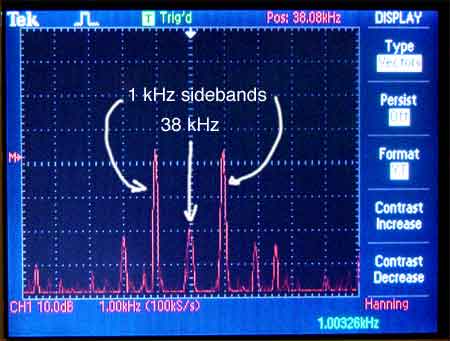
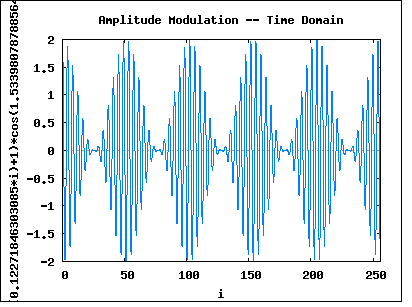
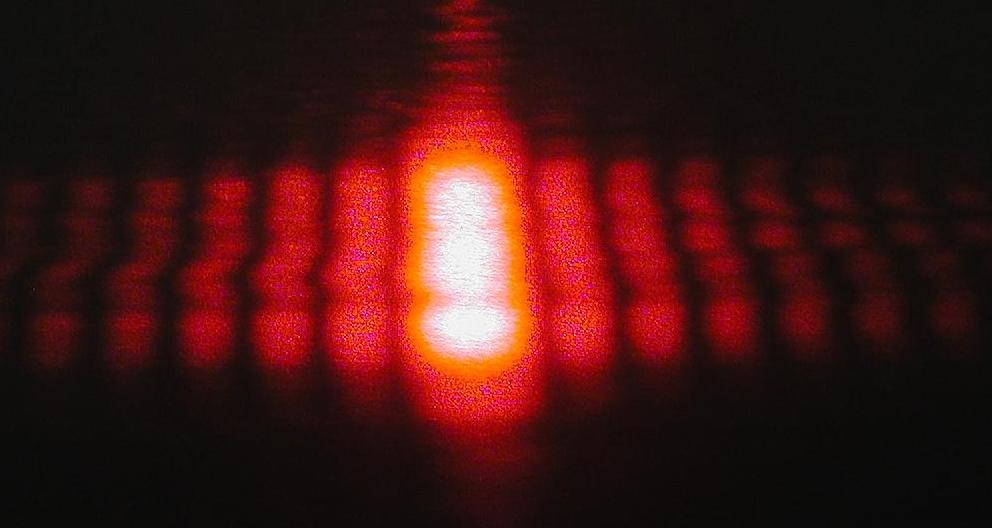

 I
have personally done these experiments. The electron diffraction pattern
shows that electrons are waves, but don’t we know them to be particles?
Particles are not able to produce patterns showing constructive and
destructive interference. The constructive areas are the bright lights and
the destructive areas are where there is no brightness. The reality is,
electrons are particles. The reality is also that electrons are waves.
I
have personally done these experiments. The electron diffraction pattern
shows that electrons are waves, but don’t we know them to be particles?
Particles are not able to produce patterns showing constructive and
destructive interference. The constructive areas are the bright lights and
the destructive areas are where there is no brightness. The reality is,
electrons are particles. The reality is also that electrons are waves.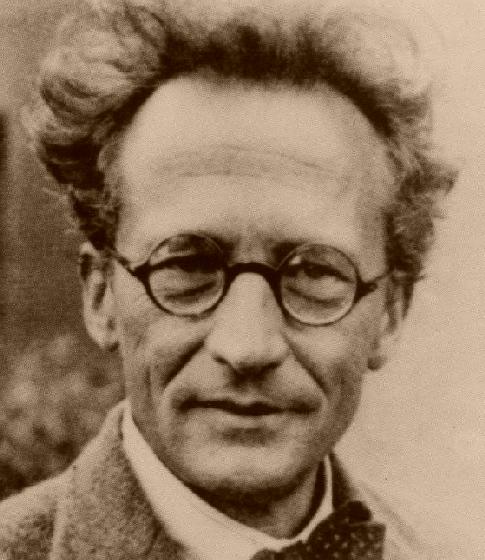
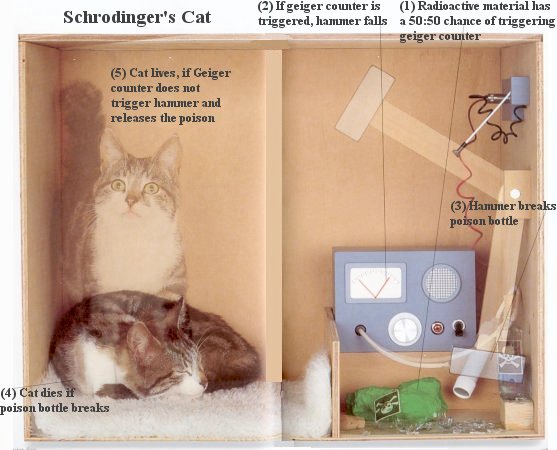 box
and looking, in effect, creates the reality of the cat being alive or
dead. In other words, the observer creates the reality. So when we observe
electrons or light, we are in effect ‘opening the box’.
box
and looking, in effect, creates the reality of the cat being alive or
dead. In other words, the observer creates the reality. So when we observe
electrons or light, we are in effect ‘opening the box’.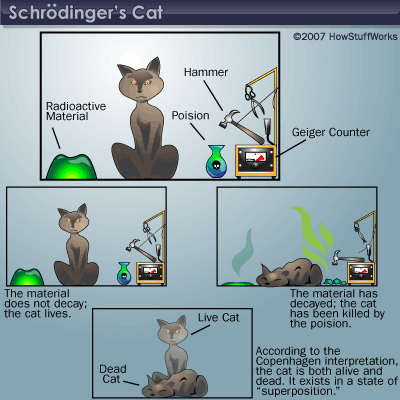
 secret messages to the allies, from the same building as occupied by the
Gestapo. In the meantime, a number of Nobel laureates had entrusted their
gold Nobel Prize medals to Bohr for safekeeping. Bohr received a tip-off
that the Nazis were going to kidnap him and force him to work on their
nuclear program. So he had to escape, but to do so with the gold medals
which the Nazis would take if he were captured, was out of the question.
secret messages to the allies, from the same building as occupied by the
Gestapo. In the meantime, a number of Nobel laureates had entrusted their
gold Nobel Prize medals to Bohr for safekeeping. Bohr received a tip-off
that the Nazis were going to kidnap him and force him to work on their
nuclear program. So he had to escape, but to do so with the gold medals
which the Nazis would take if he were captured, was out of the question.
